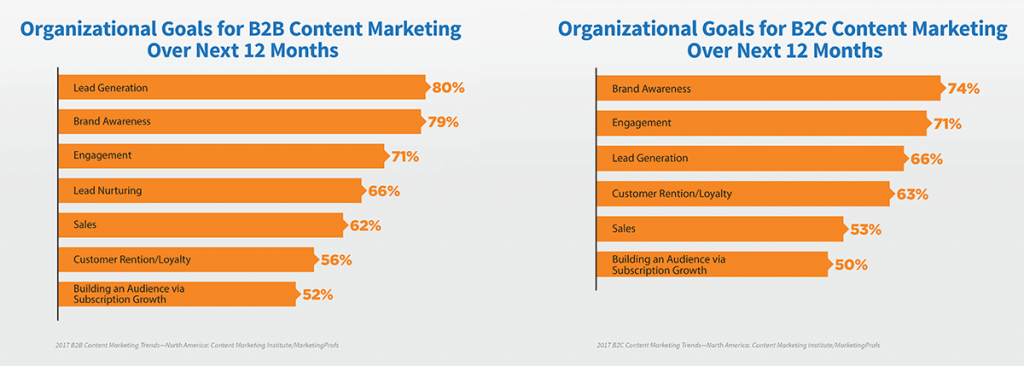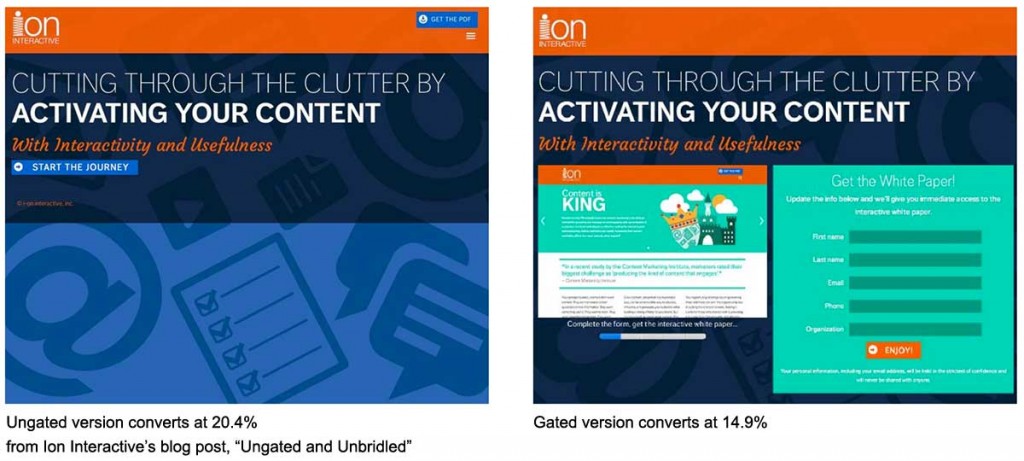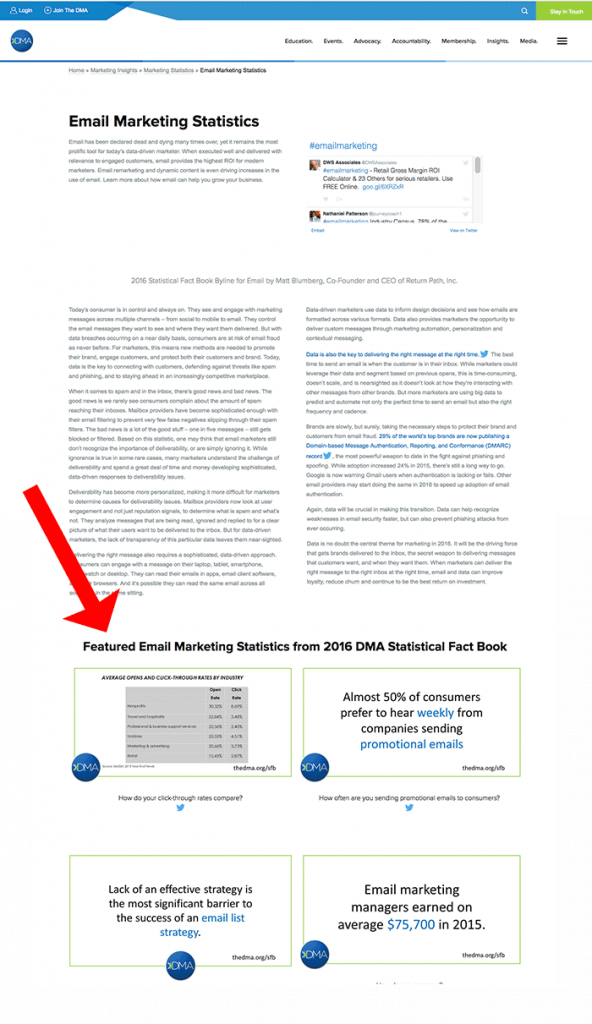
Picture this: You’ve just finished a terrific new ebook. You’re laying out the landing page for it. And because the whole point of publishing this ebook is to attract new leads, you… don’t require people to fill out a lead generation form to read it. You do not “gate” the ebook.
That’s contrary to how most of us have been handling our long-form content. It’s also contrary to what Sales might want us to do, and definitely contrary to what the results-oriented C-Suite would want.
Why? Because one of the primary goals for content marketing is to generate more leads. And to do that – the standard thinking goes – you put a form in front of that content. You gate it. Anyone who wants to read the ebook has to fill out that form. And anyone who fills out that form becomes a lead.
The downside(s) of gating content
But there’s a rising chorus of marketers who say gating content is not always a good idea. There’s some who outright condemn the practice. They say gated content is bad because
- It suppresses link building (people are less likely to link to the page)
- Makes it less likely the content will be shared – much less “go viral”
- It doesn’t generate quality leads anyway
These folks do have a point – though we still believe content gating has a place. But gating your content definitely has some strikes against it.
For the link-building problem, it’s true: You’ll get more inbound links pointing to a content asset if it is not gated. When people decide what to link to (or to not link to), it’s better for their readers if they don’t have to fill out a form to see what they’re talking about.
For the same reason, it’s also easier to get more eyeballs to a piece of ungated content. That means your promotion efforts are more likely to succeed without a lead gen form in front of your content.
Finally, in terms of lead quality, it is true that if you require everybody to fill out the form, and then think of every who does that as a potential lead, you’re going to be putting some people into your sales process who simply don’t want to be there. Just because someone wants to see a piece of content doesn’t necessarily mean they want to be put into a sales funnel.
So gating content has all those downsides. But they might not even matter all that much. Because while leads are certainly still important, they aren’t the only goal for content marketers.
There’s more to content marketing than lead generation
Enter brand awareness. It’s in head-to-head competition with lead generation as the #1 goal of content marketing.
Here’s proof: In the new B2B Content Marketing report from the Content Marketing Institute and Marketing Profs, 79% of B2B marketers said brand awareness was a goal for the next 12 months. 80% – only one percent more – named lead generation as a goal. That’s basically a tie, at least for the B2B set.
And B2Cers? Brand awareness is even more important to them. 74% of B2C marketers named brand awareness as a goal, whereas only 66% mentioned lead generation.

If brand awareness is your goal, gating your content is even less of a good idea. As mentioned above, ungated content gets significantly more exposure than gated content.
How much more? 20 to 50 times more according to David Meerman Scott’s World Wide Rave. If you’re a content marketer that wants to build brand awareness, that stat should stop you in your tracks. Even lowballing the estimate down to 20 times more exposure, it’s a big deal. What marketer wouldn’t want to 20X their exposure?
How to balance lead generation and brand exposure
“Um, yeah – but I gotta get leads. My performance is measured in part by how many leads I get.”
Clearly, this puts us in a quandary. You need the leads, so you want to gate. But you need the exposure, so you don’t want to gate.
Is there a way to compromise?
Yes. In fact, compromise may get you best of both worlds. Here’s two ways to do it:
- Make the lead generation form optional.
In this approach, you can keep your lead generation form. You can even have more than one. Just embed them here and there in the content, or next to it. But don’t require any of them to be filled out. Instead, do the lead generation version of the “soft sell”. Say something like “Complete this form to have us contact you about X.”
And that’s it. No pop-ups. No restricting the content. Just offer the optional contact form and leave the rest alone.
You may actually end up with higher-quality leads with this tactic because you aren’t forcing people into your sales funnel. Your sales team will only be reaching out to people who have specifically raised their hands to get more information from you – for the purpose of potentially buying your products or services.
That’s a very different inquiry than just some blogger or quasi-interested party wanting to see your latest study.
But don’t be surprised if you do end up with more leads. That’s what happened for Ion Interactive (http://www.ioninteractive.com/blog/ungated-and-unbridled) when they ran an A/B split test of two versions of a white paper; one gated, one ungated.
Here’s the results:

- Offer a public version and a gated version.
In this approach, you have two versions of the content: One for public access, one for people who are willing to give their information in exchange for getting the full version.
 You see this setup a lot for paid pieces of content, typically large research studies. The publisher will offer either a summary PDF or the “Executive Summary” for free, then charge for the full, 100-plus page version.
You see this setup a lot for paid pieces of content, typically large research studies. The publisher will offer either a summary PDF or the “Executive Summary” for free, then charge for the full, 100-plus page version.
There’s an example of this on the right. This is the sales page for the 2016 DMA Statistical Fact Book – an expensive piece of research that’s widely respected and cited across the industry.
To help get those citations, the DMA offers eight different charts and graphs from the study (I’m only showing four here). They’re all free, but they also include the DMA logo and a mention of where the stat is from. The hope is that these images will be used as is in PowerPoint presentations and in blog posts, articles and anywhere else someone needs an authoritative quote.
This works because it lets people get the high-level information – including a couple of charts and graphs to write articles with – but leaves most of the details behind the lead generation form.
Once again, you’ll probably end up with higher quality leads, because the people who want the full version are clearly more interested than the folks who just want a 3-5 page summary (though there’s nothing wrong with that, of course).
Conclusion
There’s no clear-cut answer for when it’s right or wrong to gate your content. But more and more, the assumption that long-form content has to be gated seems to be falling away. In place of it, we’re seeing a blend of the two approaches.
For instance, some top-of-the-funnel content goes ungated, in order to attract links and shares and exposure. Then some other content that’s meant for later on in the sales cycle does get gated.
Retargeting is also taking up some of the heavy lifting for content gates. Now that we can advertise to someone based on what page they’ve viewed, the need for detailed lead generation forms has lessened. And given what can be done with database overlays, or even social media sign in data, and all those long lead gen forms start to look more and more unnecessary. We can get the data elsewhere – we don’t need to hassle people with filling out long forms.
All you really need is to know is someone’s email address and what they’re interested in. After that, progressive profiling via email marketing – plus some good content marketing automation – can get your prospect moving toward a sale.
What do you think?
Do you gate all of your long-form content? Some of it? None of it? Are you using optional gates or some other lead gen tactic? Whatever you do, leave a comment. Tell us how it’s working.
And if you want to get 30 effective techniques to master content marketing along with valuable insights from 10+ influencers like Mark Schaefer, Rebecca Lieb, Lee Odden, Jason Miller or Ian Cleary, download our free eBook now!
Image by Chesilu



Very Educational. Thank you Pam for your insight. I downloaded the ebook to learn some new things about content writing. I am in the marketing business and I am always learning new ways. Here is my site: http://limelightleads.com/
Thank you for the information.
Ron